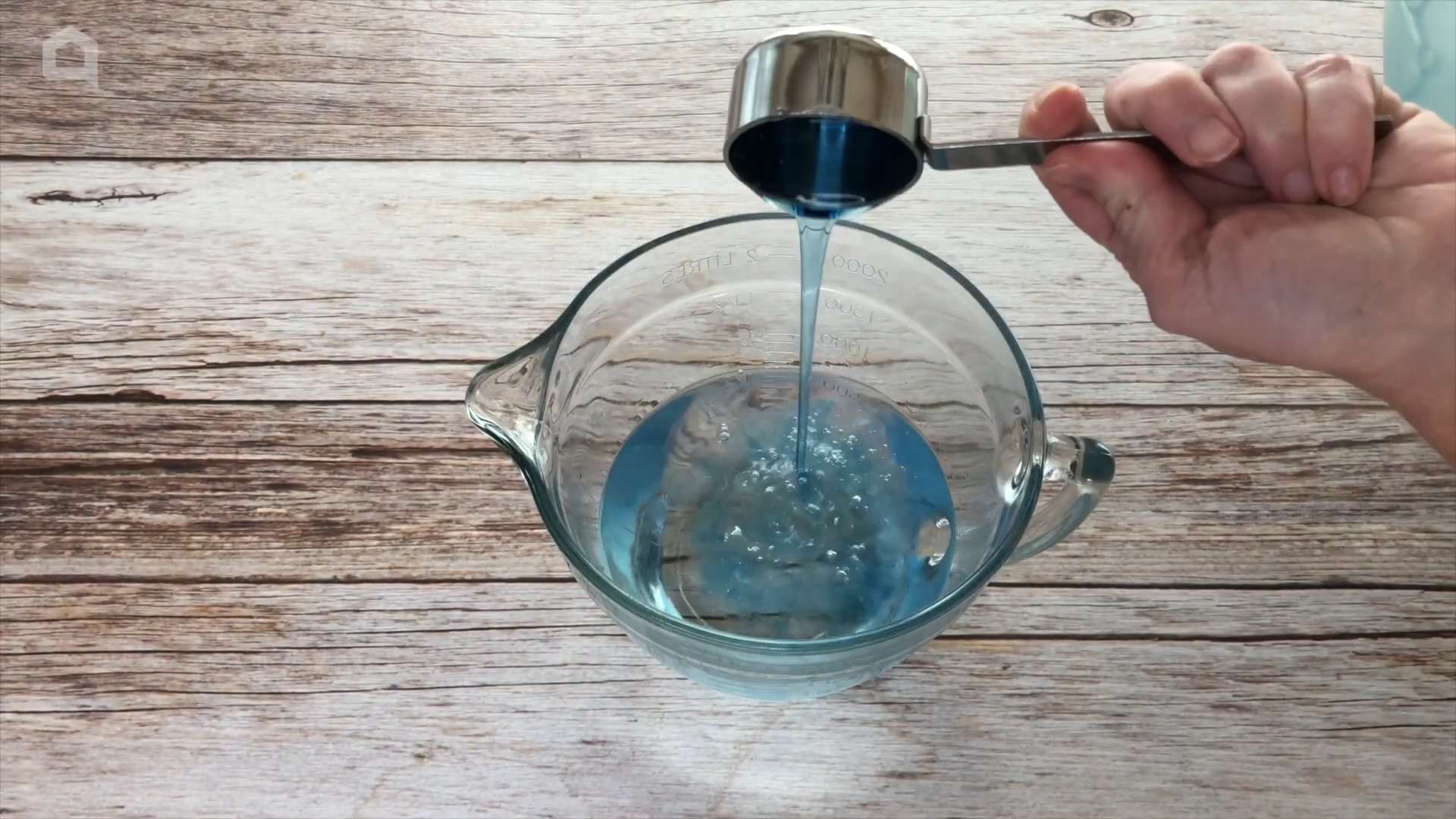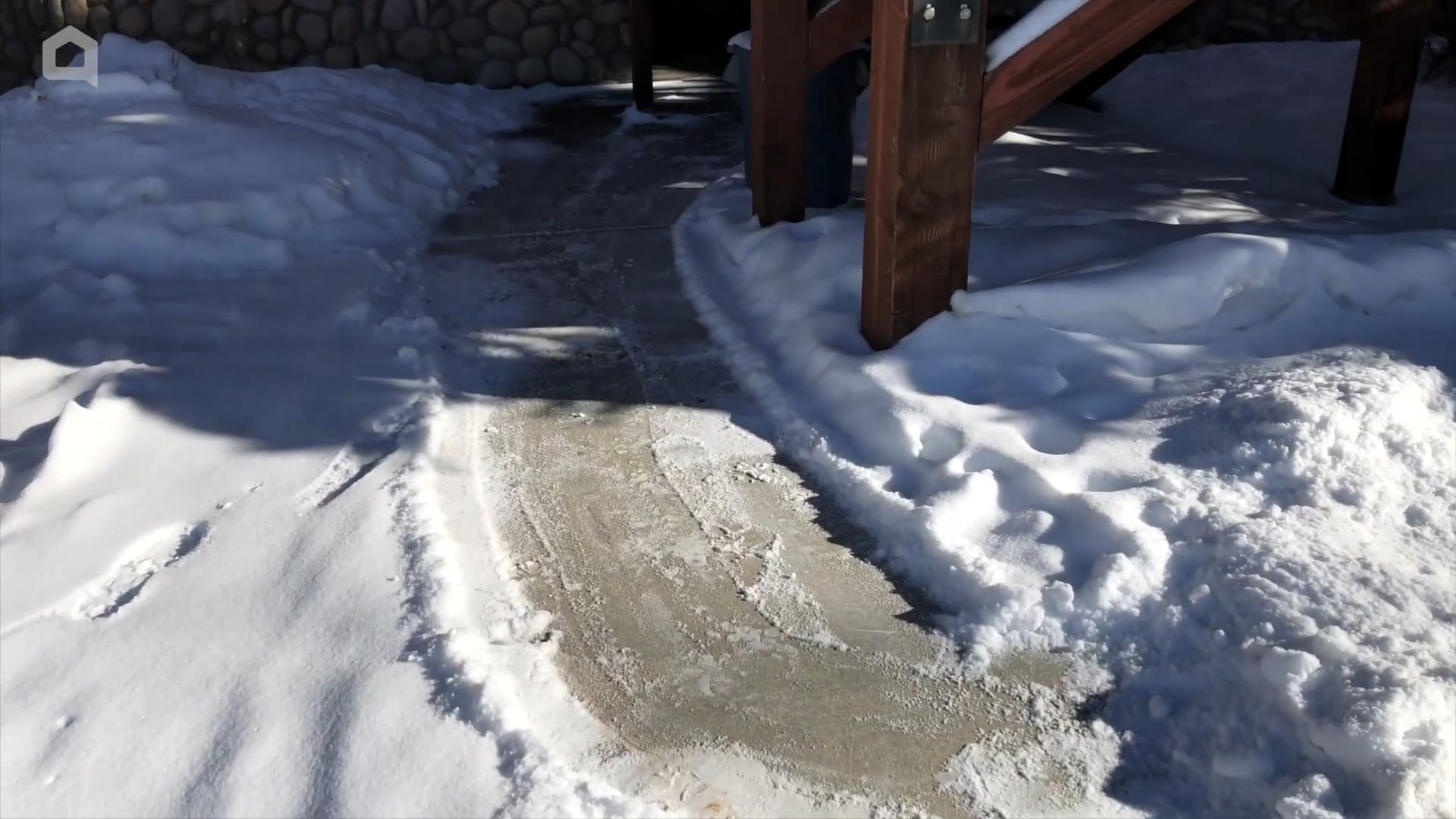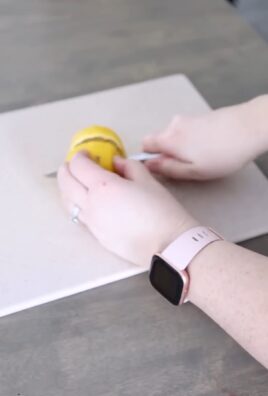Dish Soap Cleaning Hacks: Unlock the sparkling potential hidden in your kitchen sink! I’m willing to bet you have a bottle of dish soap sitting right there, ready to tackle greasy pans. But did you know its cleaning power extends far beyond the dishes? For generations, resourceful homemakers have relied on the gentle yet effective nature of dish soap to tackle a surprising array of household chores. From delicate fabrics to stubborn stains, this humble cleaner has a rich history of keeping homes fresh and tidy.
In today’s busy world, who has time to spend hours scrubbing or buying a cabinet full of specialized cleaning products? That’s where these DIY dish soap cleaning hacks come in! I’m going to show you how to simplify your cleaning routine, save money, and achieve amazing results with just a few drops of this everyday essential. Prepare to be amazed by the versatility of dish soap and discover how it can become your secret weapon against dirt, grime, and everything in between. Let’s dive in and unlock the cleaning magic!

Dish Soap Cleaning Hacks: Unleash the Power of Your Kitchen Staple!
Hey there, fellow cleaning enthusiasts! I’m about to spill the beans on some amazing cleaning hacks using something you probably already have sitting by your sink: dish soap! Forget expensive specialty cleaners; dish soap is a surprisingly versatile powerhouse that can tackle grime all over your house. Let’s dive in!
General Tips Before We Begin
Before we jump into the specific hacks, here are a few things to keep in mind:
* Always test in an inconspicuous area first. This is especially important on delicate surfaces like fabrics or painted walls. You don’t want to accidentally damage anything!
* Use a gentle dish soap. Harsh chemicals can be damaging, so opt for a mild formula. I personally prefer using a dish soap that is free of dyes and perfumes.
* Rinse thoroughly. Make sure to remove all traces of dish soap after cleaning to prevent residue buildup.
* Dilute, dilute, dilute! A little dish soap goes a long way. Using too much can make things sticky and harder to rinse.
* Wear gloves. Prolonged exposure to dish soap can dry out your skin.
Hack 1: Sparkling Clean Jewelry
Is your jewelry looking a little dull? Don’t spend a fortune on professional cleaning! Dish soap can bring back the sparkle.
What you’ll need:
* A small bowl
* Warm water
* Mild dish soap
* A soft-bristled toothbrush (an old toothbrush works great!)
* A soft cloth
Step-by-step instructions:
1. Mix the cleaning solution: In the bowl, combine warm water and a few drops of dish soap. Don’t overdo it with the soap; a little goes a long way.
2. Soak your jewelry: Place your jewelry in the soapy water and let it soak for about 15-20 minutes. This will help loosen any dirt and grime.
3. Gently scrub: Use the soft-bristled toothbrush to gently scrub your jewelry, paying attention to any crevices or hard-to-reach areas. Be extra careful with delicate stones.
4. Rinse thoroughly: Rinse your jewelry under warm running water until all traces of soap are gone.
5. Dry and polish: Use a soft cloth to dry your jewelry completely. You can also use the cloth to gently polish it for extra shine.
Important Note: This method is generally safe for most jewelry, but avoid using it on pearls, opals, or other porous stones, as they can be damaged by water and soap.
Hack 2: Degreasing Your Kitchen
The kitchen can get greasy quickly, but dish soap is your secret weapon!
What you’ll need:
* Spray bottle
* Warm water
* Dish soap
* Microfiber cloths
Step-by-step instructions:
1. Create your cleaning solution: Fill the spray bottle with warm water and add a squirt of dish soap. Gently shake to mix.
2. Spray and wipe: Spray the solution onto greasy surfaces like your stovetop, backsplash, or countertops. Let it sit for a few minutes to loosen the grease.
3. Wipe clean: Use a microfiber cloth to wipe away the grease and grime. You may need to scrub a little for stubborn spots.
4. Rinse (if needed): If there’s any soapy residue, wipe the surface with a clean, damp cloth.
5. Dry: Dry the surface with a clean, dry cloth.
Bonus Tip: For really tough grease, you can add a tablespoon of baking soda to your cleaning solution.
Hack 3: Cleaning Your Makeup Brushes
Dirty makeup brushes can harbor bacteria and lead to breakouts. Keep them clean with this simple dish soap hack!
What you’ll need:
* Warm water
* Dish soap
* A small bowl or your hand
* A clean towel
Step-by-step instructions:
1. Wet the bristles: Run your makeup brushes under warm water, making sure to only wet the bristles and avoid getting water on the handle.
2. Add dish soap: Place a drop or two of dish soap in the palm of your hand or in a small bowl.
3. Swirl and lather: Gently swirl the brush bristles in the soap, creating a lather.
4. Rinse thoroughly: Rinse the bristles under warm water until all traces of soap are gone and the water runs clear.
5. Reshape and dry: Gently squeeze out any excess water and reshape the bristles. Lay the brushes flat on a clean towel to dry. Avoid standing them upright, as water can seep into the handle and loosen the glue.
Frequency: I recommend cleaning your makeup brushes at least once a week, or more often if you use them daily.
Hack 4: Removing Stains from Clothing
Dish soap can be surprisingly effective at removing certain types of stains from clothing.
What you’ll need:
* Dish soap
* Water
* A soft cloth or toothbrush
Step-by-step instructions:
1. Act fast: The sooner you treat the stain, the better your chances of removing it.
2. Blot the stain: Use a clean cloth to blot the stain, working from the outside in to prevent it from spreading.
3. Apply dish soap: Apply a small amount of dish soap directly to the stain.
4. Gently rub: Use a soft cloth or toothbrush to gently rub the dish soap into the stain.
5. Let it sit: Let the dish soap sit on the stain for about 10-15 minutes.
6. Rinse thoroughly: Rinse the area with warm water until all traces of soap are gone.
7. Launder as usual: Launder the garment as usual, following the care instructions on the label.
Important Note: This method works best on grease-based stains like oil, food stains, and makeup. Always test in an inconspicuous area first to ensure the dish soap doesn’t damage the fabric.
Hack 5: Cleaning Your Eyeglasses
Keep your eyeglasses sparkling clean and streak-free with this simple hack.
What you’ll need:
* Warm water
* Dish soap (make sure it’s lotion-free!)
* A clean microfiber cloth
Step-by-step instructions:
1. Rinse your glasses: Rinse your eyeglasses under warm water to remove any loose dirt or debris.
2. Apply dish soap: Place a tiny drop of dish soap on each lens.
3. Gently rub: Gently rub the dish soap over the lenses and frames, being careful not to scratch them.
4. Rinse thoroughly: Rinse your eyeglasses under warm water until all traces of soap are gone.
5. Dry with a microfiber cloth: Use a clean microfiber cloth to dry your eyeglasses completely. Avoid using paper towels or other abrasive materials, as they can scratch the lenses.
Frequency: I clean my eyeglasses every day to keep them clear and prevent smudges.
Hack 6: Cleaning Your Plants’ Leaves
Dusty plant leaves can hinder their ability to photosynthesize. Give them a little TLC with dish soap!
What you’ll need:
* Warm water
* Dish soap
* A soft cloth or sponge
* A spray bottle (optional)
Step-by-step instructions:
1. Mix the cleaning solution: In a bowl or spray bottle, combine warm water and a very small amount of dish soap (a few drops per quart of water).
2. Wipe the leaves: Dip a soft cloth or sponge into the soapy water and gently wipe each leaf, removing any dust or dirt.
3. Rinse (optional): If you used a spray bottle, you can gently mist the leaves with clean water to rinse off any soapy residue. Alternatively, you can wipe the leaves with a clean, damp cloth.
4. Dry: Allow the leaves to air dry.
Important Note: Avoid using this method on plants with delicate or fuzzy leaves.
Hack 7: Unclogging a Drain
While not a replacement for a professional plumber, dish soap can sometimes help unclog a slow-draining sink.
What you’ll need:
* Dish soap
* Boiling water
Step-by-step instructions:
1. Pour dish soap down the drain: Pour about 1/4 cup of dish soap down the drain.
2. Let it sit: Let the dish soap sit for about 15-20 minutes. This will help break down any grease or buildup in the drain.
3. Pour boiling water down the drain: Carefully pour a pot of boiling water down the

Conclusion
So, there you have it – a treasure trove of dish soap cleaning hacks that will revolutionize your cleaning routine! We’ve explored how this humble kitchen staple can be transformed into a powerful and versatile cleaning agent, tackling everything from stubborn grease to grimy surfaces. Why spend a fortune on specialized cleaners when a simple bottle of dish soap can do the trick, and often even better?
The beauty of these DIY cleaning solutions lies not only in their effectiveness but also in their simplicity and affordability. You’re likely to have dish soap readily available, making these hacks incredibly convenient for tackling those unexpected messes. Plus, you’re reducing your reliance on harsh chemicals, creating a safer and healthier environment for yourself and your family.
But the real magic happens when you start experimenting and tailoring these hacks to your specific needs. For instance, if you’re dealing with particularly tough stains on your laundry, try pre-treating them with a concentrated dish soap solution before washing. Or, if you’re looking for an extra boost of cleaning power for your bathroom, add a few drops of essential oil, like tea tree or eucalyptus, to your dish soap mixture for their antibacterial and antifungal properties.
Consider these variations:
* Lemon-infused dish soap: Add lemon peels to your dish soap bottle and let it sit for a week. The citrus oils will infuse the soap, adding extra degreasing power and a refreshing scent.
* Dish soap and vinegar all-purpose cleaner: Combine equal parts dish soap and white vinegar in a spray bottle. This is a fantastic solution for cleaning countertops, sinks, and even shower doors.
* Dish soap and baking soda scrub: Mix dish soap with baking soda to form a paste. This is an excellent abrasive cleaner for tackling stubborn grime in ovens, stovetops, and bathtubs.
We’ve covered a lot of ground, from cleaning your oven racks to reviving your jewelry, all with the power of dish soap. Remember, the key is to start with a small amount of dish soap and adjust as needed. Always test your cleaning solution on an inconspicuous area first, especially when dealing with delicate surfaces.
Now it’s your turn to put these dish soap cleaning hacks to the test! We’re confident that you’ll be amazed by the results. Don’t just take our word for it – try them out and see for yourself. And most importantly, we want to hear about your experiences! Share your successes, your variations, and any other creative uses you discover for dish soap in the comments below. Let’s build a community of cleaning enthusiasts who are passionate about finding simple, effective, and affordable solutions for a sparkling clean home. So grab your dish soap, get cleaning, and let us know what you think! Your feedback will help others discover the amazing potential of this everyday cleaning essential.
Frequently Asked Questions (FAQs)
Is it safe to use dish soap on all surfaces?
While dish soap is generally safe for most surfaces, it’s always best to test it on an inconspicuous area first, especially when dealing with delicate materials like wood, painted surfaces, or certain types of fabrics. Some dish soaps may contain ingredients that could potentially damage or discolor these surfaces. Avoid using dish soap on porous surfaces like unsealed grout, as it can be difficult to rinse completely and may leave a residue. When in doubt, consult the manufacturer’s instructions for the surface you’re cleaning.
Can I use any type of dish soap for these cleaning hacks?
Generally, yes, you can use most types of dish soap for these cleaning hacks. However, it’s important to consider the specific task at hand. For example, if you’re cleaning delicate items like jewelry, you might want to opt for a mild, fragrance-free dish soap to avoid any potential irritation or damage. For tougher cleaning jobs, a dish soap with degreasing properties will be more effective. Avoid using dish soaps that contain bleach or ammonia, as these chemicals can be harmful and may react negatively with other cleaning agents.
How much dish soap should I use in my cleaning solutions?
A little dish soap goes a long way! Start with a small amount, typically a few drops to a teaspoon, and adjust as needed. Using too much dish soap can make it difficult to rinse away completely and may leave a sticky residue. It’s always better to start with less and add more if necessary. Remember to dilute the dish soap with water to create a gentle and effective cleaning solution.
Will dish soap damage my appliances?
When used properly and diluted with water, dish soap is generally safe for cleaning most appliances. However, it’s important to avoid using abrasive scrub brushes or scouring pads, as these can scratch the surfaces of your appliances. Always test the cleaning solution on an inconspicuous area first to ensure it doesn’t cause any damage or discoloration. For appliances with sensitive electronic components, avoid getting water or dish soap inside the appliance.
Can I use dish soap to clean my car?
While dish soap can be used to wash your car in a pinch, it’s not the ideal solution. Dish soap is designed to remove grease and food particles, and it can also strip away the wax coating on your car’s paint, leaving it vulnerable to scratches and damage. If you do use dish soap to wash your car, be sure to use a very diluted solution and rinse thoroughly. For best results, use a car wash soap specifically formulated for automotive paint.
How do I remove dish soap residue from surfaces?
If you’ve used too much dish soap or haven’t rinsed thoroughly, you may notice a soapy residue on the surface you’ve cleaned. To remove the residue, simply wipe the surface with a clean, damp cloth. You may need to repeat this process several times to remove all traces of the soap. For stubborn residue, try adding a small amount of white vinegar to the water. Vinegar is a natural cleaning agent that can help to dissolve soap residue.
Can I mix dish soap with other cleaning products?
It’s generally not recommended to mix dish soap with other cleaning products, especially those containing bleach or ammonia. Mixing these chemicals can create harmful fumes that can be dangerous to your health. Always use cleaning products separately and follow the manufacturer’s instructions carefully.
Is dish soap safe for septic systems?
Most dish soaps are safe for septic systems when used in moderation. However, it’s important to choose a dish soap that is biodegradable and phosphate-free. Phosphates can disrupt the balance of bacteria in your septic tank, which can lead to problems with its functionality. Avoid using excessive amounts of dish soap, as this can also overload your septic system.
How can I make my own dish soap?
Making your own dish soap is a great way to control the ingredients and reduce your environmental impact. There are many recipes available online, but a simple one involves combining grated castile soap, washing soda, and borax. You can also add essential oils for fragrance and extra cleaning power. Be sure to research and follow a reputable recipe to ensure your homemade dish soap is effective and safe to use.
What are the environmental benefits of using dish soap cleaning hacks?
Using dish soap cleaning hacks can be more environmentally friendly than relying on harsh chemical cleaners. Dish soap is often biodegradable and less toxic than many commercial cleaning products. By using dish soap for multiple cleaning tasks, you can reduce your consumption of single-use plastic bottles and minimize the amount of harmful chemicals released into the environment. Plus, you’re likely to save money by using a readily available and affordable cleaning agent.




Leave a Comment